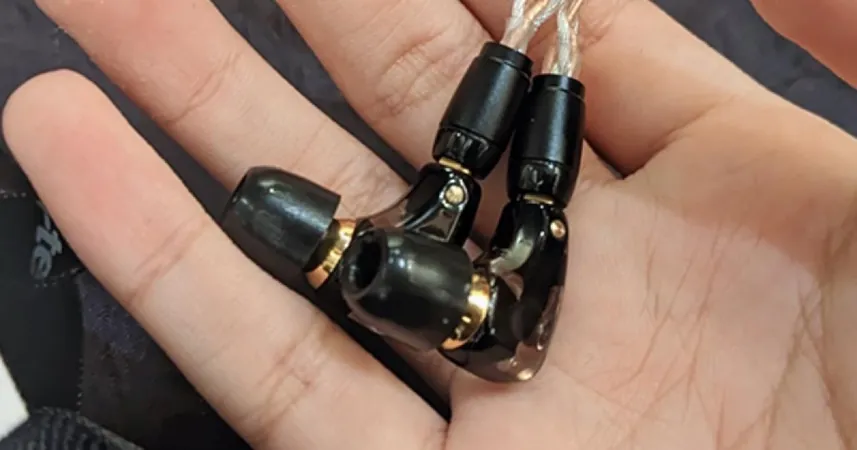
Experience the Future of Sound with Campfire Audio's Revolutionary Axion IEMs
2025-04-08
Author: Sarah
Campfire Audio has established itself as a pioneer in the audio industry, widely recognized for its daring use of unconventional materials to create extraordinary sound experiences. The company is known for its innovative drivers, such as the Orbit TWS, which utilized a liquid crystalline polymer, and the Mammoth IEM, which featured a bio-cellulose driver designed specifically for robust bass reproduction.
The latest addition to Campfire Audio's lineup is the Axion IEM, unveiled at CanJam Singapore 2025. Priced between S$300 and S$400, these wired in-ear monitors come with a USB-C cable that integrated a DAC, offering both high functionality and aesthetic appeal with its sleek glossy black finish.
What truly distinguishes the Axion from its competitors in this price range is its groundbreaking dynamic driver made from silicon. Campfire Audio appears to be one of the first, if not the very first, audio manufacturers to incorporate a silicon dynamic driver in their products, initially seen in the predecessor, the Axion Multiverse III.
But how does this innovative construction translate into actual sound quality? At CanJam Singapore 2025, which took place on April 5 and 6, we had the opportunity to put the Axion to the test.
One standout aspect of the Axion’s sound signature is its bass response. There is a noticeable Harman-style bass boost in its frequency response—a feature that can occasionally lean towards bass bloat. This can be particularly pronounced in genres such as instrumental music, where harmonic instruments like pianos run the risk of being overshadowed by excessive low-end energy.
Interestingly, while certain bass tones, like sub-bass synths, may feel ethereal and lose some weight, the overall balance of the Axion’s sound remains captivating. The highs present a commendable clarity, avoiding harshness and maintaining a pleasant listening experience. However, the mids display a slight deficiency due to a dip around the 1kHz mark. This results in vocals, particularly in tracks mixed lower in the audio spectrum, potentially lacking liveliness.
Despite these nuances, fans of Campfire Audio might find this sound profile comforting and familiar. It could prove to be a great companion for more aggressive music styles, particularly electronic and hip-hop, where the energetic bass can truly shine.
Additionally, the inclusion of a USB DAC in the Axion’s cable is a strategic move that supports high-resolution audio up to 32-bit/384KHz, amplifying compatibility with smartphones and modern audio sources. This ensures that listeners can fully appreciate the intricate details in their music.
As for availability, the Axion is set to capture the attention of audio enthusiasts and casual listeners alike, showcasing Campfire Audio's ongoing commitment to innovation in audio technology. With each release, they challenge the status quo and elevate the listening experience, one extraordinary driver at a time.
Stay tuned for more updates as we continue to explore the evolving world of audio equipment!



 Brasil (PT)
Brasil (PT)
 Canada (EN)
Canada (EN)
 Chile (ES)
Chile (ES)
 Česko (CS)
Česko (CS)
 대한민국 (KO)
대한민국 (KO)
 España (ES)
España (ES)
 France (FR)
France (FR)
 Hong Kong (EN)
Hong Kong (EN)
 Italia (IT)
Italia (IT)
 日本 (JA)
日本 (JA)
 Magyarország (HU)
Magyarország (HU)
 Norge (NO)
Norge (NO)
 Polska (PL)
Polska (PL)
 Schweiz (DE)
Schweiz (DE)
 Singapore (EN)
Singapore (EN)
 Sverige (SV)
Sverige (SV)
 Suomi (FI)
Suomi (FI)
 Türkiye (TR)
Türkiye (TR)
 الإمارات العربية المتحدة (AR)
الإمارات العربية المتحدة (AR)